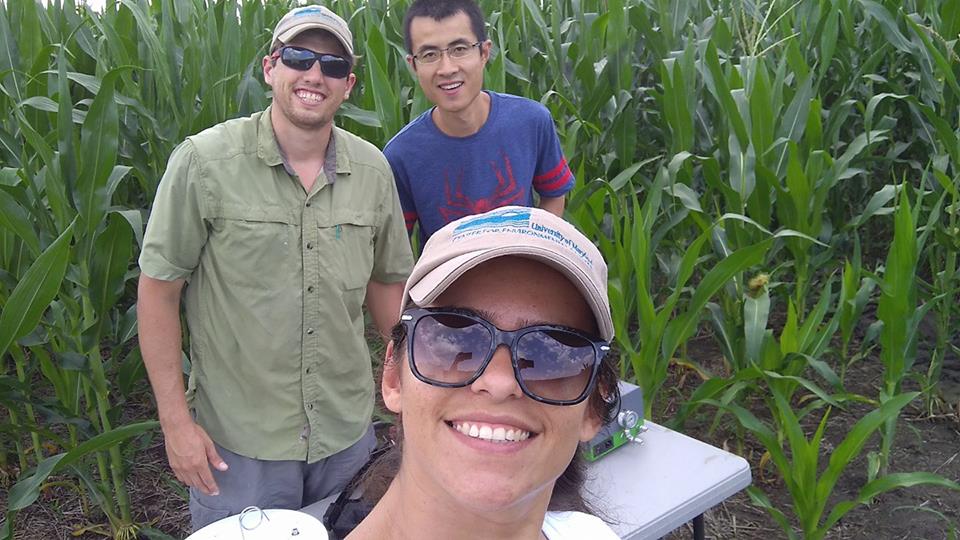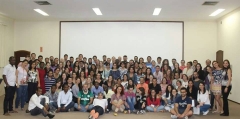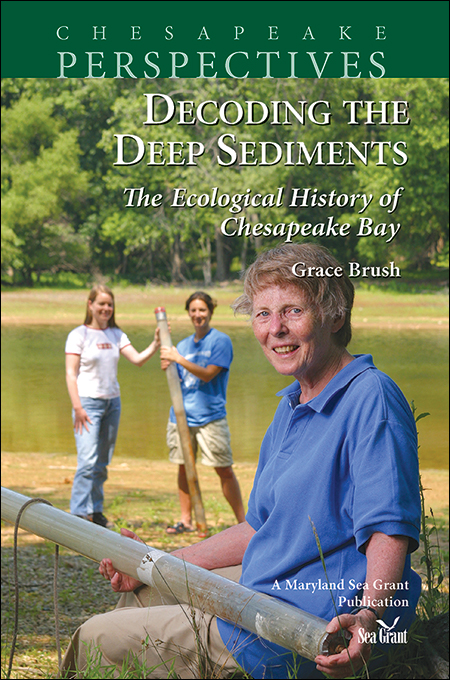Knauss legislative fellowships in Congress help build careers — and they're fun and educational. See our video and fact sheet for details.
Embracing the Edge
A recent NPR Hidden Brain podcast discussed the idea of the edge effect, which is the concept of encouraging collaboration between people with diverse interests and backgrounds.
The thought is that, when diverse peoples interact and work together, they can solve problems more effectively. For example, one study from Columbia University found that those having relationships with people from other countries become more creative, as evidenced by scoring higher on creativity tests. Applying this idea to the world of scientific research, a Harvard study found that published research with diverse authorship is more likely to get greater attention. Increasing interaction with diversity — gender, race, experience, background, religion, or any other number of identities — is a great way open our eyes to new ideas and become more creative.
From an ecological perspective, the edge effect refers to the changes in a population or community that occurs at the edge of two or more habitats. Generally, it is in these spaces that we expect to find higher species diversity, driven by adaptive and resilient behavior.
I work to embrace with the tenets of this edge effect concept, especially the importance of considering and implementing different thoughts and ideas to create more resilient solutions for our social and environmental problems. The difficulty is putting the rubber to the road and actually applying this concept to my scientific career. Thankfully, with some fortune and intention, I had an opportunity presented to me to start embracing both meanings of the edge — the one for habitat and biodiversity, and the one with more informed perspectives.
Two years ago, my advisor told me about a specialized two-week summer graduate school course that some of his colleagues hosted in Brazil. It was the São Paulo School of Advanced Science on Nitrogen Cycling, Environmental Sustainability and Climate Change. The topic directly related to my research on Maryland’s Eastern Shore. The course brought together 100 graduate students from around the world for the purpose of discussing and creating solutions for environmental issues we work on related to nitrogen cycle changes.
 |
|
Eline Costa, Qiurui Zhu (UMCES), and I working together in the field. Photo Credit: Eline Costa |
Excess nitrogen, partially driven by fertilizer production and application, has caused major environmental problems from contaminated drinking water supplies to large algal blooms globally and in the Chesapeake Bay. While nitrogen is essential for crop growth, excess application can have unintended consequences. It is these unintended consequences that we are currently trying to understand and mediate. My project examines the effectiveness a particular best management practice has on reducing nitrogen going in the Chesapeake waters, which I was able share with other course participants in Brazil.
Each day for two weeks, we listened to lectures in the morning. In the afternoon we worked in small groups to brainstorm and develop solutions to specific issues raised in the lecture. Being only one of a handful of students from the United States, with 50 students from different parts of Brazil and 50 students from other parts of the world, the small groups had a good mixture of cultures, identities, religions, and backgrounds converging to brainstorm solutions to the global nitrogen problem. To me, this experience fulfilled the concept of edge effect, because everyone got to interact with people of diverse backgrounds and meld together those perspectives.
In one particular small group session, comprised of Brazilians, Iranians, Pakistanis, Dutch, Venezuelans, and Americans, we were discussing the idea of raising the prices on nitrogen fertilizer as way to decrease the amount bought and subsequently the amount applied for crops. It seemed like a simple solution until we considered all the perspectives. Questions like, who would we increase the price for? Everyone, or only countries with a large GDP? How would raising the price impact a farmer’s ability to grow their crops? Sure, it would reduce nitrogen application, but if they can’t grow the crop then that reduces food availability. Since we had representatives from countries with different economic structures, crop production, and fertilizer application rates, the original solution of raising fertilizer prices became much more complicated, but the final solution was much more refined and nuanced because of the diversity of the group.
These types of experiences are essential in scientific research because they can provide career-long collaborations that enhance both the people and the research. In fact, this Brazil school experience inspired a Brazilian graduate student who attended the course, Eline Costa, to visit the University of Maryland Center for Environmental Science, Appalachian Lab in Frostburg, Maryland for six months. Since the institution is located in the headwaters of the Potomac, we study how human activities impact the environment from the start of the rivers into the Chesapeake Bay.
Eline helped us with fieldwork on the Eastern Shore of Maryland and got to immerse herself in the small mountain town culture of Frostburg. The seasonality of Maryland was completely new for her coming from the Brazilian coast, where flip-flops are common for most of the year. Wearing a winter coat and seeing snow was new and thrilling for her. Luckily, we found a Brazilian restaurant on Kent Island that we treated ourselves to after long field days. This collaboration and our conversations about sampling methods and field experiences helped me view aspects of my research in new ways. I was sad for Eline to return to Brazil, but I look forward to continuing to work with her. I guess I have go to back to Brazil now!
As we continue to try and solve tough global and regional environmental issues, seeking people with different backgrounds, viewing problems from a new perspective, and valuing input from diverse sources are essential tools for new scientists. To my fellow young scientists, I say, embrace the edge.
Photo, top left: Participants and hosts of the Nitrogen school in Brazil.
Photo credit: Nazanin Ak
See all posts to the Fellowship Experiences blog


